shopping_cart
Количка
0,00 PLN
0
Клипборд
Трябва да сте влезли в
Menu
-
moreX
-
Компоненти
-
-
Category
-
Полупроводници
- Диоди
- Тиристори
- Електроизолирани модули
- Изправителни мостове
-
Транзистори
- Транзистори | GeneSiC
- Модули SiC MOSFET | Mitsubishi
- Модули SiC MOSFET | STARPOWER
- ABB SiC MOSFET модули
- IGBT модули | MITSUBISHI
- Транзисторни модули | MITSUBISHI
- MOSFET модули | MITSUBISHI
- Транзисторни модули | ABB
- IGBT модули | POWEREX
- IGBT модули | INFINEON (EUPEC)
- Полупроводникови елементи от силициев карбид
- Go to the subcategory
- Драйвeри
- Силови блокове
- Go to the subcategory
- Електрически преoбразователи
-
Пасивни компоненти (кондензатори, резистори, предпазители, филтри)
- Резистори
-
Предпазители
- Миниатюрни предпазители за електронни системи серия ABC и AGC
- Бързи тръбни предпазители
- Закъснителни вложки с характеристика GL/GG и AM
- Ултрабързи стопяеми вложки
- Бързи предпазители британски и американски стандарт
- Бързи предпазители европейски стандарт
- Тягови предпазители
- Високоволтни предпазителни вложки
- Go to the subcategory
-
Кондензатори
- Кондензатори за двигатели
- Електролитни кондензатори
- Кондензатори тип snubbers
- Кондензатори за мощност
- Кондензатори за DC (постояннотокови вериги)
- Кондензатори за компенсиране на мощност
- Високоволтови кондензатори
- Кондензатори за индукционно нагряване
- Кондензатори за съхранение на импулси и енергия
- DC LINK кондензатори
- Кондензатори за AC/DC вериги
- Go to the subcategory
- Филтри EMI (против смущения)
- Суперкондензатори
-
Защита от пренапрежение
- Защита от пренапрежение за коаксиални приложения
- Защита от пренапрежение за системи за видеонаблюдение
- Защита от пренапрежение за захранващи кабели
- Ограничители за пренапрежение за LED
- Ограничители за пренапрежение за фотоволтаици
- Защита на системата за претегляне
- Защита от пренапрежение за Fieldbus
- Go to the subcategory
- Go to the subcategory
-
Релета и контактори
- Теория- релета и контактори
- Полупроводникови релета АС 3-фазни
- Релета полупроводникови DC
- Регулатори, управляващи системи и аксесоари
- Системи за мек старт и реверсивни контактори
- Електромеханични релета
- Контактори
- Ротационни превключватели
-
Полупроводникови релета АС 1-фазни
- Полупроводникови релета AC еднофазни серия 1 | D2425 | D2450
- Полупроводникови релета AC еднофазни серия CWA I CWD
- Полупроводникови релета AC еднофазни серия CMRA I CMRD
- Полупроводникови релета АС ендофазни серия PS
- Полупроводникови релета AC двойни и четворни серия D24 D, TD24 Q, H12D48 D
- 1-фазни полупроводникови релета серия gn
- Полупроводникови релета АС серия ckr
- Релета AC еднофазни на шина DIN серия ERDA и ERAA
- Еднофазни AC релета за ток 150А
- Двойни полупроводникови релета, интегрирани с радиатор за DIN шина
- Go to the subcategory
- Полупроводникови релета АС 1-фазни, за печатни платки
- Интрфейс релета
- Go to the subcategory
- Индукционни елементи
- Радиатори, Bаристори, Tермични защити
- Вентилатори
- Климатизация, Оборудване за електрически шкафове, Охладители
-
Батерии, зарядни устройства, буферни захранвания и инвертори
- Батерии, зарядни устройства - теоретично описание
- Литиево-йонни батерии. Персонализирани батерии. Система за управление на батерията (BMS)
- Батерии
- Зарядни устройства и аксесоари за батерии
- UPS резервно захранване и буферни захранвания
- Преобразуватели и аксесоари за фотоволтаици
- Енергиен запас
- Горивни клетки
- Литиево-йонни батерии
- Go to the subcategory
-
Автоматика
- Futaba Drone Parts
- Крайни изключватели, Микроизключватели
- Датчици, Преобразователи
- Пирометри
- Броячи, Времеви релета, Панелни измервателни прибори
- Промишленни защитни устройства
- Светлинна и звукова сигнализация
- Термокамера
- Екрани LED
- Управляваща апаратура
-
Регистратори
- Регистратор на температура със запис на лента и цифров показател - AL3000
- Микропроцесорни регистратори с екран LCD серия KR2000
- Регистратор KR5000
- Измервател със функция за регистриране на влажност и температура HN-CH
- Експлоатационни материали за регистратори
- Компактен графичен регистратор 71VR1
- Регистратор KR 3000
- Регистратор РС серия R1M
- Регистратори РС серия R2M
- Регистратор РС - 12 изолирани входа– RZMS
- Регистратор PC, USB, 12 изолирани входа – RZUS
- Go to the subcategory
- Go to the subcategory
-
Проводници, Кабел литцендрат, Кабелни канали, Меки връзки
- Проводници
- Кабел литцендрат
-
Кабели за специални приложения
- Компенсиращи и удължаващи проводници
- Проводници за термодвойки
- Съединителни проводници за РТ датчици
- Многожилни проводници темп. -60C до +1400C
- SILICOUL проводници средно напрежение
- Запалителни проводници
- Нагревателни проводници
- Едножилни проводници темп. -60C до +450C
- Проводници за ЖП приложения
- Нагревателни проводници в Ех изпълнение
- Go to the subcategory
- Кабелни канали
-
Плетени кабели
- Плоски плетени кабели
- Кръгли плетени кабели
- Много гъвкави плетени кабели - плоски
- Много гъвкави плетени кабели - кръгли
- Медни цилиндрични плетени кабели
- Медни цилиндрични плетени кабели и канали/кожуси
- Гъвкави заземяващи ленти
- Плетени проводници от оцинкована и неръждясваща стомана
- Медни изолирани плетени проводници PCV -температура до 85 градуsа по C
- Плоски плетени алуминиеви проводници
- Комплект за подсъединение - плетени проводници и тръбички
- Go to the subcategory
- Оборудване за тяга
- Кабелни накрайници
- Изолирани еластични шини
- Многослойни еластични шини
- Системи за провеждане на кабели (шлауфи)
- Кабелни канали / маркучи
- Go to the subcategory
- View all categories
-
Полупроводници
-
-
- Suppliers
-
Applications
- AC и DC задвижвания (инвертори)
- CNC машинни инструменти
- Energy bank
- HVAC автоматизация
- Двигатели и трансформатори
- Заваръчни машини и заваръчни машини
- Захранващи (UPS) и токоизправителни системи
- Измерване и регулиране на температурата
- Измерване и регулиране на температурата
- Индукционно отопление
- Индустриална автоматизация
- Индустриална автоматизация
- Индустриални защитни устройства
- Компоненти за потенциално експлозивна атмосфера (EX)
- Машини за сушене и обработка на дървесина
- Машини за термоформоване на пластмаси
- Минно дело, металургия и основаване
- Оборудване за разпределителни, контролни и телекомуникационни шкафове
- Печат
- Трамвайна и железопътна тяга
-
Инсталация
-
-
Индуктори
-
-
Индукционни устройства
-
-
https://www.dacpol.eu/pl/naprawy-i-modernizacje
-
-
Обслужване
-
- Contact
- Zobacz wszystkie kategorie
Blog navigation
Industrial batteries and how to manage their operation

A battery is a type of galvanic cell that converts chemical energy directly into electrical energy. The special features of batteries are their rechargeability and ability to store electrical energy.
This makes them an integral part of uninterruptible power systems - systems that maintain a constant power supply even in the event of a power outage or grid disturbance.Despite their advantages and wide industrial applications, batteries are also a bit of a problem in the topic of uninterruptible power supply because they have limited capacity, life span and are sensitive to various operating conditions such as temperature, which can affect their premature loss of capacity or malfunction.
In order to increase the efficiency and protect the batteries from harsh operating conditions, so-called battery management systems are used. Rapid technological development of such systems affects the efficiency of battery operation, including the efficiency of electricity conversion, and allows to monitor the operation of galvanic cells in real time, in effect balancing the slow development of chemical power source technology.
TYPES OF INDUSTRIAL BATTERIES
The most common type of industrial cells are lead-acid versions. They provide great comfort of use, because they do not require maintenance of the electrolyte and can work in any position due to the lack of liquid electrolyte. The main representatives are sealed types SLA/VRLA, often called maintenance-free batteries. Thanks to sealed casings, they do not emit acid fumes and harmful gases during normal operation, so they are harmless to the environment and safe to use.
Maintenance-free SLA batteries are made with two technologies that differ in the way the electrolyte binds:
• AGM batteries (Absorbed Glass Mat) – all of the electrolyte is absorbed by the highly porous glass fibers between the separators located between the lead plates of the battery.
• Gel batteries – the electrolyte is a gel mass due to the addition of silica SiO2.
AGM batteries have a higher terminal voltage and are able to run longer due to their lower internal resistance than gel batteries. Additionally, they have a higher capacity because in gel batteries part of the electrolyte is a gelling agent.
On the other hand, gel batteries provide better cell cooling and greater resistance to vibration and shock. Further advantages are the ability to regenerate after hours of short circuits and resistance to surges.
AGM technology is most commonly used in UPS for cyclic operation, while the gel version is ideal for buffer power supplies.
Li-ion batteries are another type of battery that is increasingly finding its way into specialized and industrial applications. The operation of Li-Ion batteries is based on chemical transformations that occur as positive ions pass through the electrolyte between the cathode and anode. The cathode is made of lithium compounds, while the anode is usually made of carbon materials.
The characteristics of such batteries are:
- Large capacity in a relatively small size;
- No memory effect (can be recharged at any time);
- Low cell weight;
- Environmentally friendly (no heavy metals, recyclable);
- Long service life;
- High energy density;
- Operating in a high operating temperature range.
BATTERY MANAGEMENT SYSTEMS
Through constant emphasis on the use of new technologies that perform significantly better and have a longer life than their predecessors, Li-Ion batteries are slowly replacing older solutions where their use will positively impact the performance of the end device.
In order to get the most out of their batteries, while ensuring that they are protected from the environmental conditions in which they operate, most companies utilize additional systems that support the operation of such batteries.
BMS (Battery Management Systems)
BMS are electronic control systems that monitor and regulate the charging and discharging of batteries. Characteristics monitored most commonly include detection of battery type, voltage, temperature, capacity, state of charge, power consumption, remaining run time, charge cycles, and more.
Battery management systems are designed to ensure that the remaining energy in the cells is optimally utilized. To increase battery life, BMS protects batteries from deep discharge and from surges that can result from fast charging and high discharge current. If you have multi-cell batteries, the BMS also provides a cell balancing function so that each cell in the battery has the same charging and discharging requirements.
There are many types of BMS systems available on the market. Battery management systems are best selected with the help of a specialist who, after determining the requirements that the BMS should meet, will be able to propose specific solutions.
Related products
Related posts
 Now available – DC/DC converters from PREMIUM
Now available – DC/DC converters from PREMIUM
We introduced a novelty to our permanent offer in DACPOL in the category of power supplies and converters and today...
Read more
 New release in DACPOL lighting for lathes – Kira covers
New release in DACPOL lighting for lathes – Kira covers
We introduce a new product into the DACPOL category of industrial lighting and today we offer KIRA covers for...
Read more




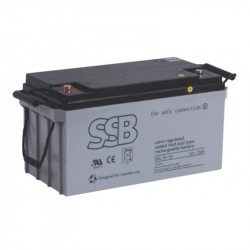
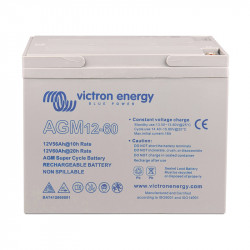
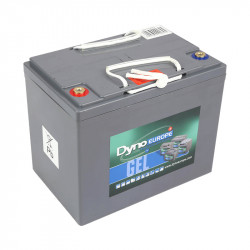
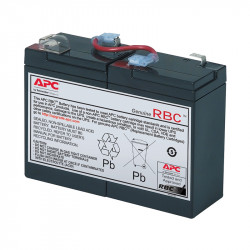
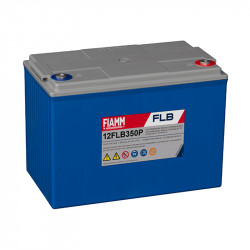
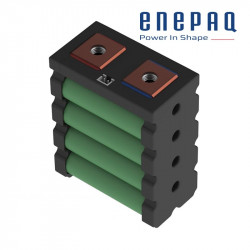
Leave a comment